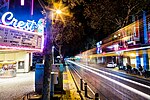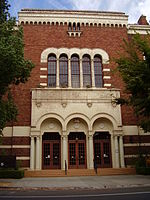California State Indian Museum
1940 establishments in CaliforniaCalifornia Historical LandmarksHistory museums in CaliforniaMuseums established in 1940Museums in Sacramento, California ... and 1 more
Native American museums in California

The California State Indian Museum is a museum in the state park system of California, United States, interpreting the diverse cultures of the indigenous peoples of California. It is located in Midtown Sacramento at 2618 K Street. The museum exhibits traditional items illustrating the varying cultures of the state's first inhabitants. The native population of California, one of the largest and most diverse in the Western hemisphere, was made up of over 150 distinct tribal groups who spoke at least 64 different languages. Prior to the arrival of the first European explorers, the native population is estimated to have been in excess of 500,000 people.
Excerpt from the Wikipedia article California State Indian Museum (License: CC BY-SA 3.0, Authors, Images).California State Indian Museum
K Street, Sacramento
Geographical coordinates (GPS) Address Website Nearby Places Show on map
Geographical coordinates (GPS)
| Latitude | Longitude |
|---|---|
| N 38.572777777778 ° | E -121.47138888889 ° |
Address
State Indian Museum (SHP)
K Street
95816 Sacramento
California, United States
Open on Google Maps




